From jaw dropping landscapes through rugged coastlines to the vibrant greens of the Annamite Range, this is arguably Vietnam’s most celebrated road trip. And the best way to really get under the skin of this vast and epic mountain pass is by motorbike.
Day 1
My adventure began at Cloudy Homestay and Hostel in Hoi An, a great accommodation with a super-friendly family that accommodated all my requirements. I was up by 6.30 a.m, had my breakfast and waited for Mr.Uyen, my easy-rider for two days. I was the passenger given my complete fear of riding a motorbike in Vietnam, in fact I wouldn’t recommend anywhere in Vietnam for inexperienced riders. Easy riders are Vietnamese who offer all-inclusive day tours on their motorbikes, an activity that’s becoming increasingly popular among tourists in Vietnam.
Our first stop was after a thirty-minute drive at Duy Vinh Village, an ancient town situated on the southern bank of Thu Bon River belonging to Nam Phuoc town of the Duy Xuyen district.
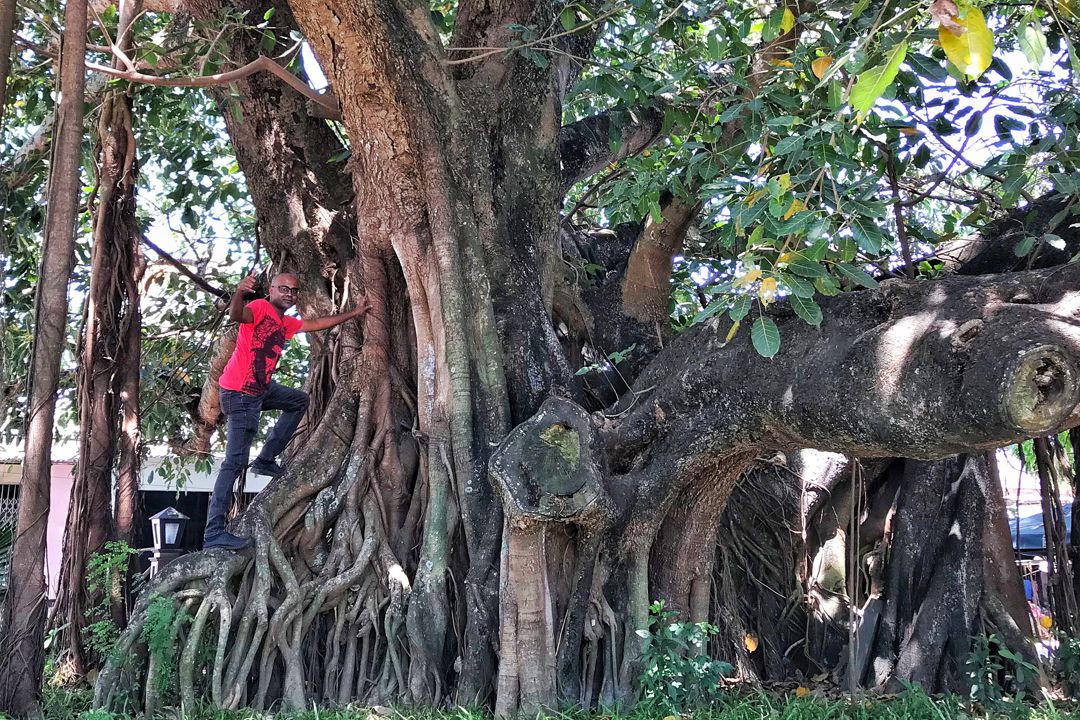
After the obligatory photo of myself over a tree branch we again hit the road.
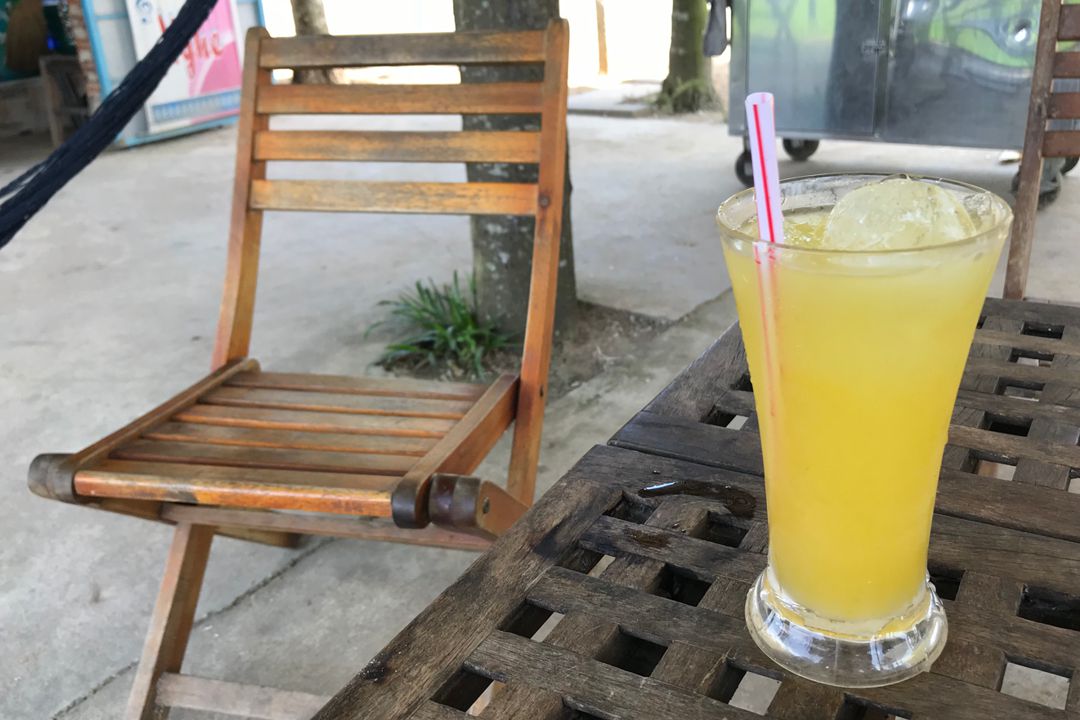
In less than an hour we stopped for a sugarcane juice by a roadside stall.
As we rode away, one of the first few things that struck me was the sheer smoothness of Mr.Uyen’s 125cc Honda motorbike. “How will it be like riding off-road?” I thought. But, I’ll find that out over the next two days and see Mr.Uyen put his machine to work. We continued pushing further off-the-beaten-track and arrived at Mỹ Sơn, a UNESCO World Heritage site overlooked by the Cat’s Tooth Mountain. It was once the religious center of the Champa Kingdom and was largely shaped by Hindu values and beliefs. Despite its enchanting setting within a lush jungle valley ringed by mountains, its temples have deteriorated over time and by human intervention – only about 20 structures survived where at least 68 once stood.
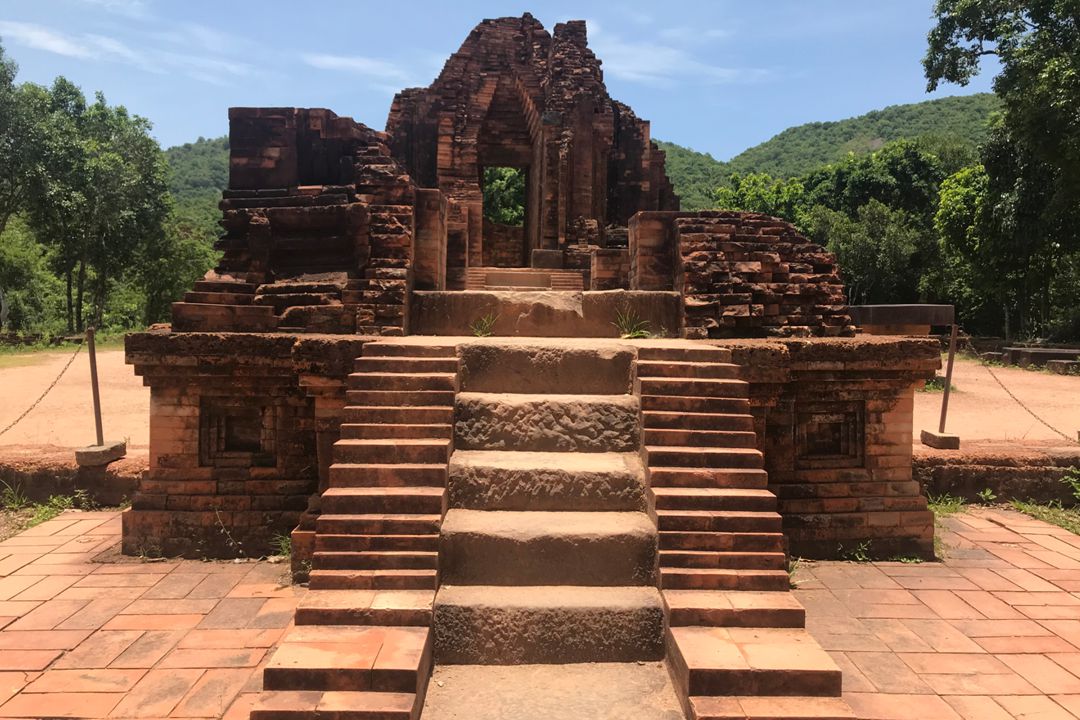
Mỹ Sơn is a UNESCO World Heritage site in a mountain valley about 40 miles west of Da Nang.
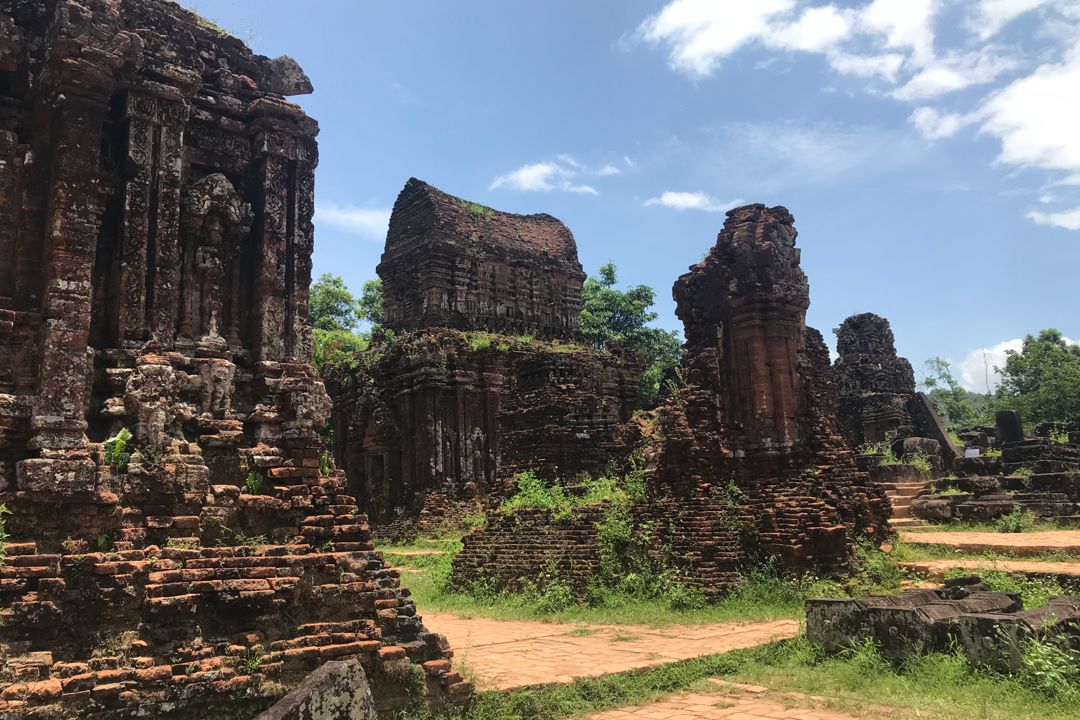
Mỹ Sơn have served as a burial place for Cham monarchs.
We glided our motorbike at 80 mph (130 km/h) – like a plane on auto-pilot. Time didn’t seem to matter to us, actually, nothing seemed to matter as we continued chasing the sun’s rays!
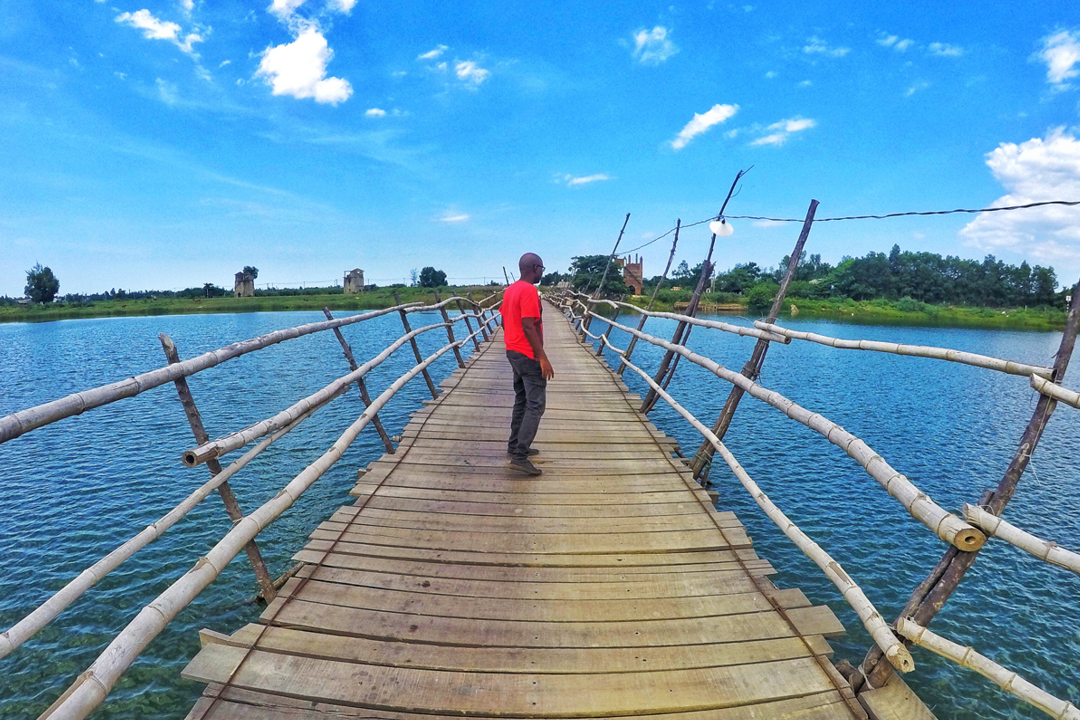
On our way to Mỹ Sơn and back, we crossed Thu Bon river via this temporary bamboo bridge.
The smell of fresh air filled our nostrils as we glided over a temporary bridge constructed from bamboo and wood. I felt like a tiny speck in the middle of Thu Bon River, twelve miles from where we started, and thousands of miles from the place I call home. The ultimate free spirited feeling came over me as the reality of my current place sank in. No plans, no stress, just pure bliss.
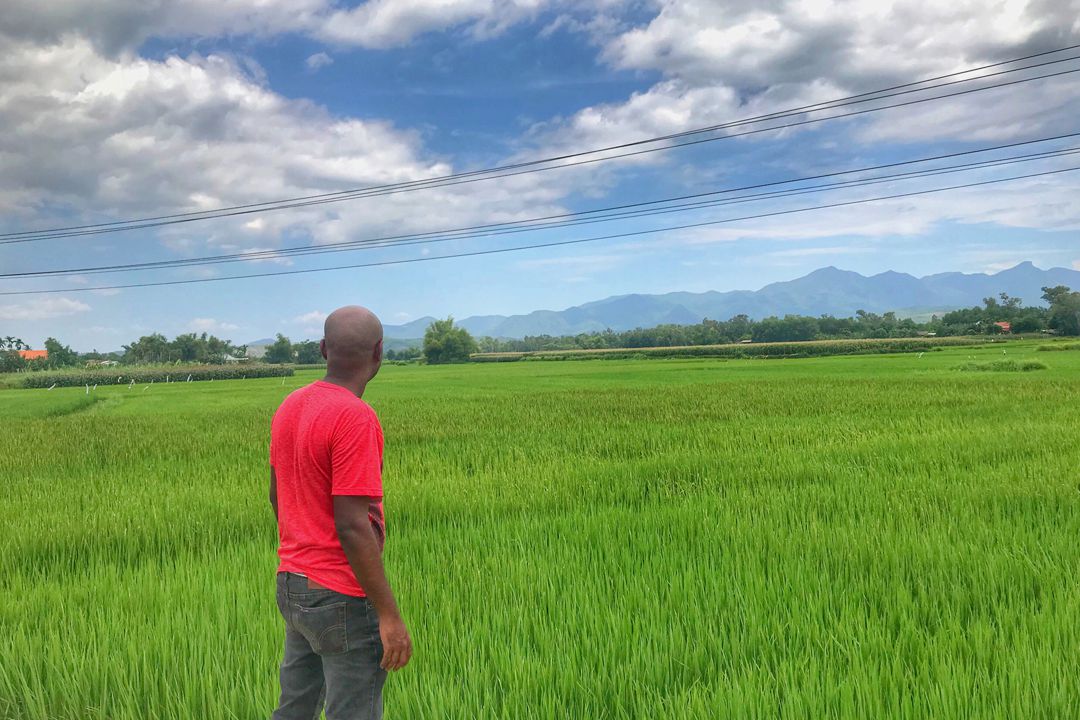
Its not until you are thrown into a completely new environment that you become aware of how minuscule your old stresses are.
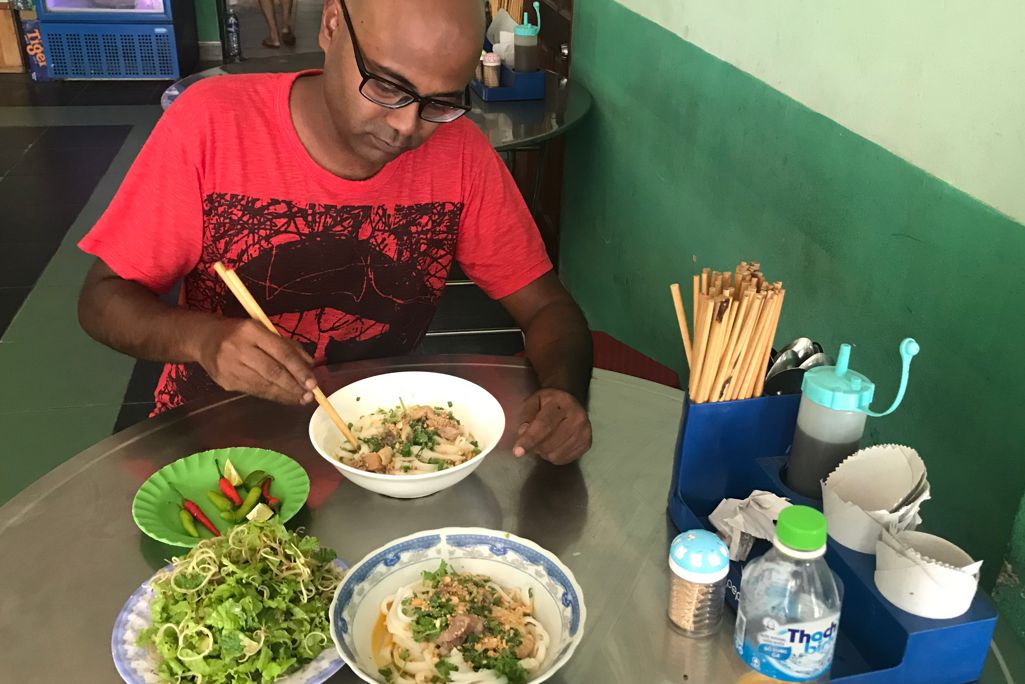
We had Pho for lunch and it was the best meal I had in Vietnam.
After lunch, we traveled back to Hoi An to see the Japanese Covered Bridge, one of the most iconic attractions in all of Vietnam. The bridge was first built in the 1590s by the Japanese community to connect with the quarters of the Chinese community. During the past hundreds of years, the decorative elements remained relatively intact to the original Japanese design. The French colonists destroyed the roadway, and was restored to its original arched shape in 1986.
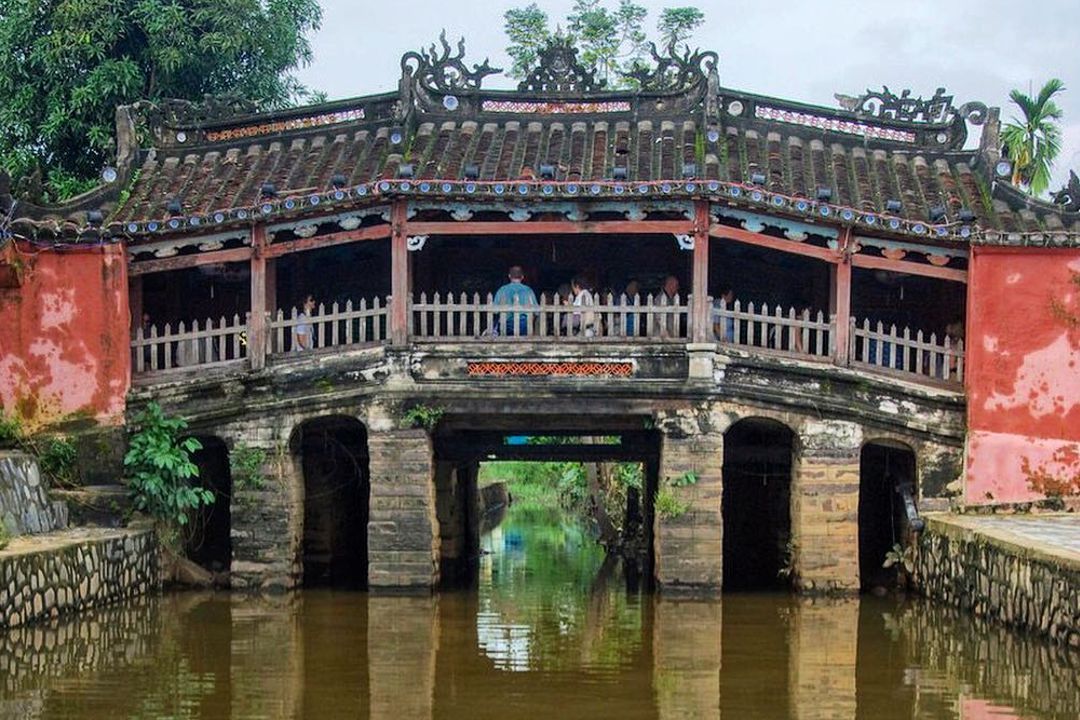
Today, the bridge stands as a symbol of Hoi An and remains as aesthetically pleasing as it was when it first opened.
By 2.45 p.m. I was pretty much done with my itinerary for the day. We returned to Cloudy Homestay and Hostel to collect my backpack and moved to Quynh Nhan Homestay, which seemed much closer to the lantern market. Mr.Uyen advised me to sleep early since he will pick me at 7 a.m next morning.

We traveled almost on 100 kilometers on day one.
After a well-deserved shower I headed to the night market to get some food and checkout the lantern shops. The pedestrian-friendly streets of Hoi An are more spectacular when the sun goes down, transforming into an illuminating display of colorful lanterns, featuring live music and folk dance.
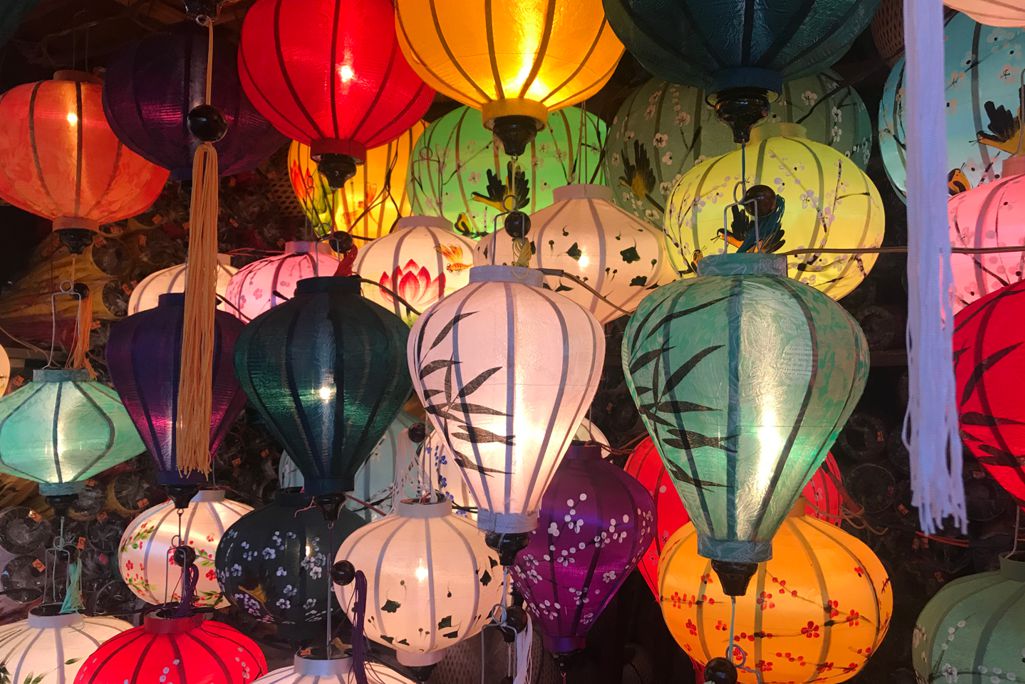
As the sun goes down, the pedestrian-friendly streets are lit with thousands of colorful lanterns.
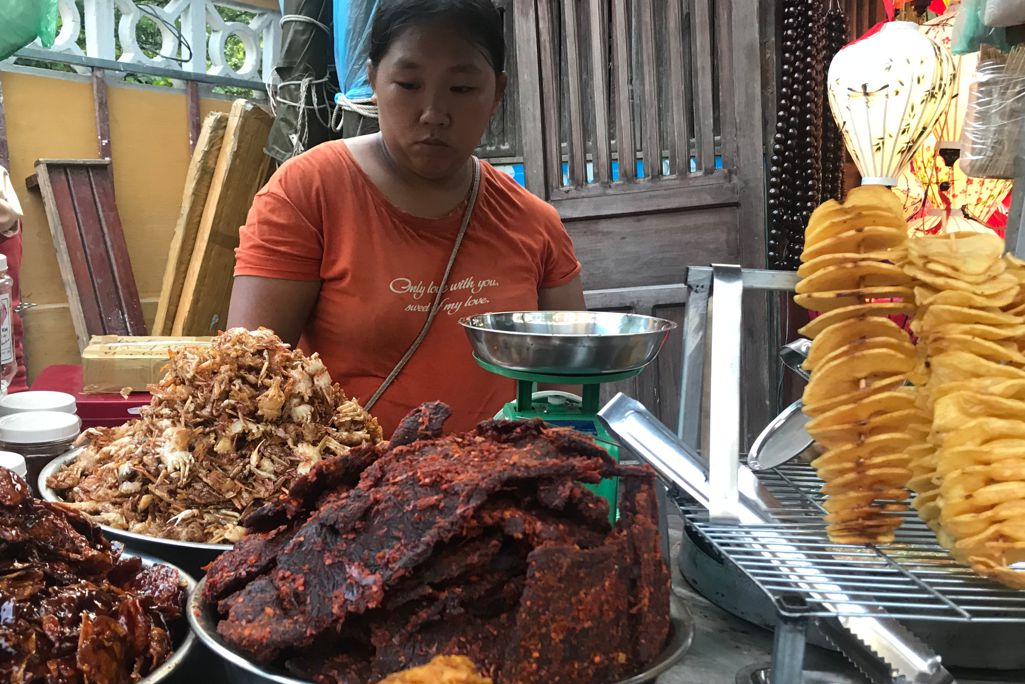
I weaved through the alleys in search of hidden food spots while learning about the the town’s food culture.
Day Two
The next morning we left at sharp 7 a.m, with the need to hustle to get to Da Nang International Airport before 8 p.m, 30 kilometers to the Eastern Sea coast, I had a long travel day ahead of me. A 35-minute drive got us to the entrance of the Marble Mountains, a cluster of five limestone hills, each names after the natural element it represents: Thuy Son (Water), Moc Son (Wood), Hoa Son (Fire), Kim Son (Metal or Gold) and Tho Son (Earth).
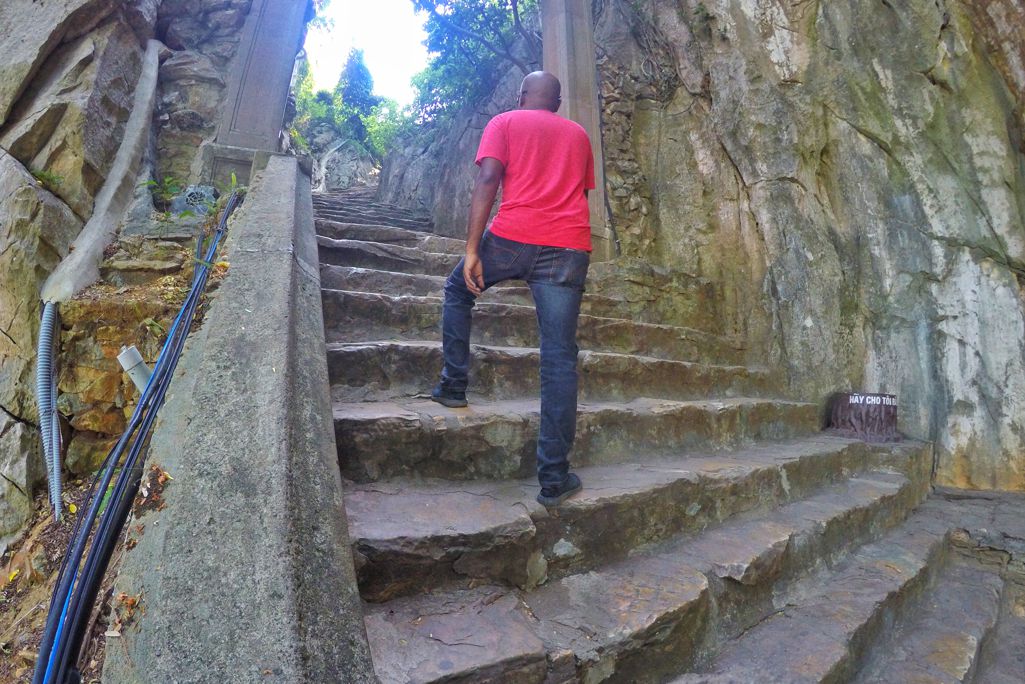
Climbing the stairs can be strenuous as they are cut steeply and also close to the walls.
It is also a pilgrimage site with caves, temples, tunnels and peaks. The awe-inspiring appearance helps explain the tall tales attached to these mythical mountains. One local legend, for instance, has it that the Marble Mountains sprouted from the shards of a dragon’s egg.
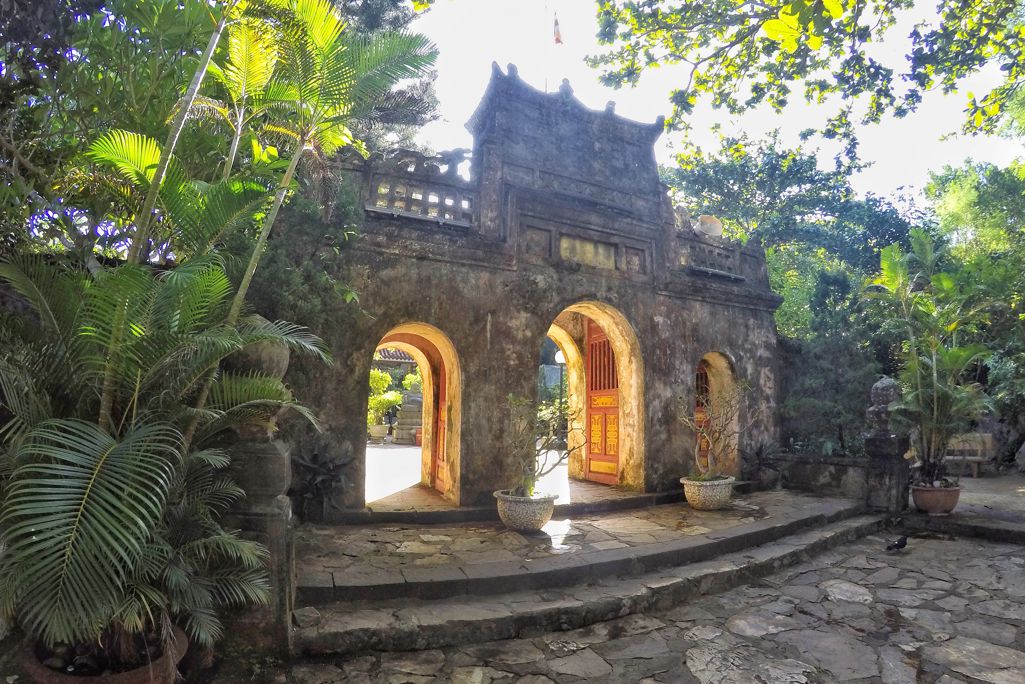
Everywhere you look there’s something amazing to see.
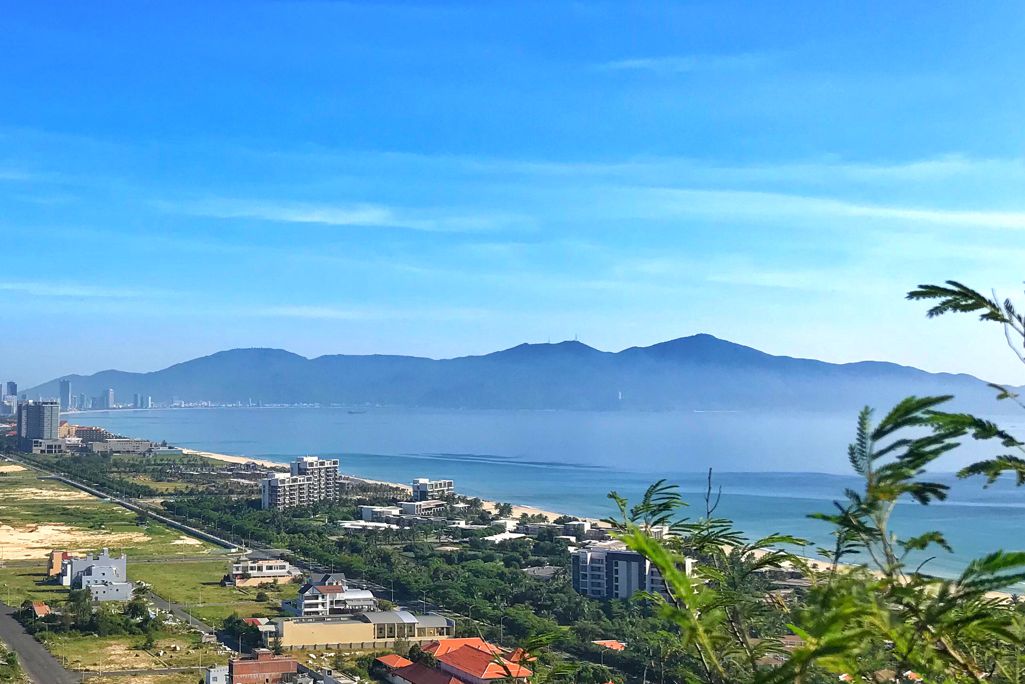
Stunning views of the surroundings from the top of the peak.
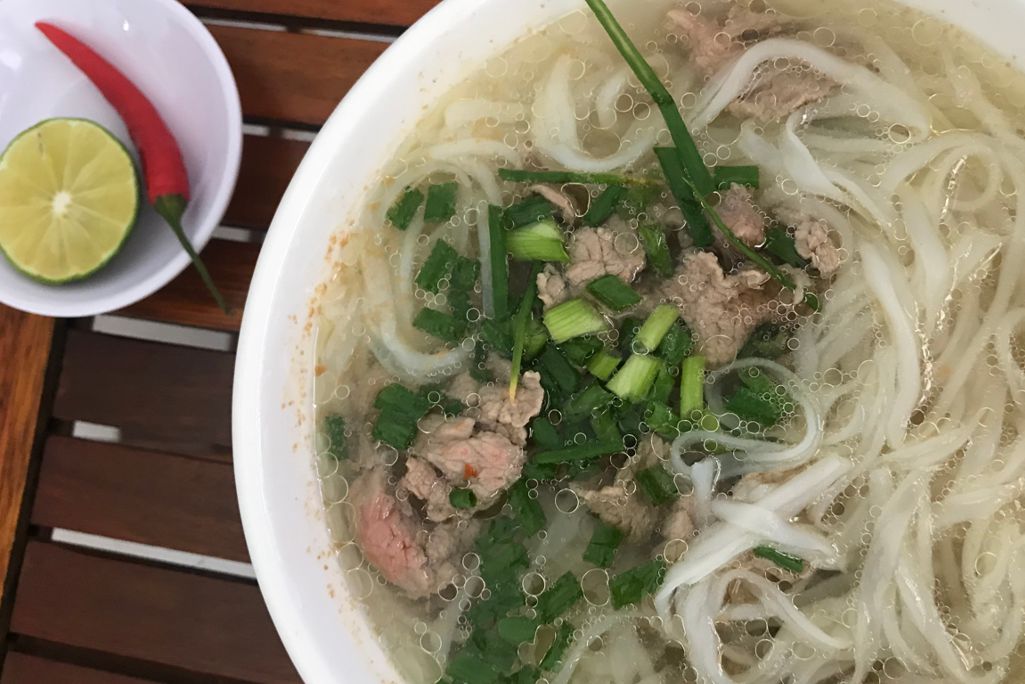
This aromatic soup made with rice noodles is one of most sought after breakfast items in Vietnam.
The sooner we were done with our first meal of the day, we again hit the road for another ten-minutes before arriving at My Khe Beach, commonly referred to the coastline that stretches 35-kilometers from Hai Van Pass to Non Nuoc. The beach was lined with hotels, cafes, bars and several restaurants. There were hordes of tourists and locals relaxing under sun umbrellas while the typical Vietnamese snacks were delivered to them by surrounding food vendors.
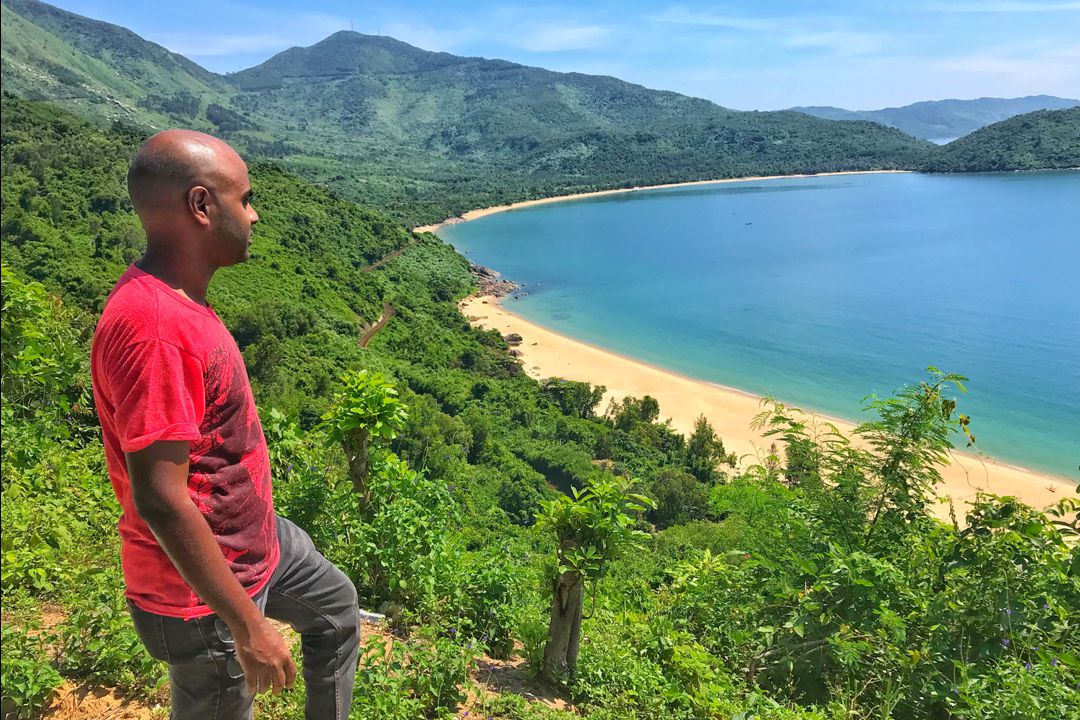
Standing in awe of the epic views looking out over the ocean.
My adrenaline jumped a mile high with the first view of the Hai Van Pass. We stopped for a few minutes and I stood on an edge of the 21-kilometer stretch of coastal road, looking out over the East Vietnam Sea. The spectacular coastal route gained popularity in 2008 after the British television series, Top Gear featured it as one of the most scenic routes to ride a motorbike in Vietnam. It stretches from Hue to Danang or vice versa, and takes less than an hour by motorbike. The sun’s rays across the landscape was more lunar than terrestrial. It was very captivating: a stark beauty of asymmetric mountains, and clumps of jagged hills under a blanket of spongy moss. The sound of screeching tires on the bitumen echoed from the distance. Somehow it was already the best leg of the journey, maybe it was because the whole stretch was extremely picturesque or because we were witnessing nature in its purest form, so untouched, or maybe it was because of the deepest light blue sky and the lush green of the pristine surroundings, the cleanest breaths of air. I couldn’t figure it out!
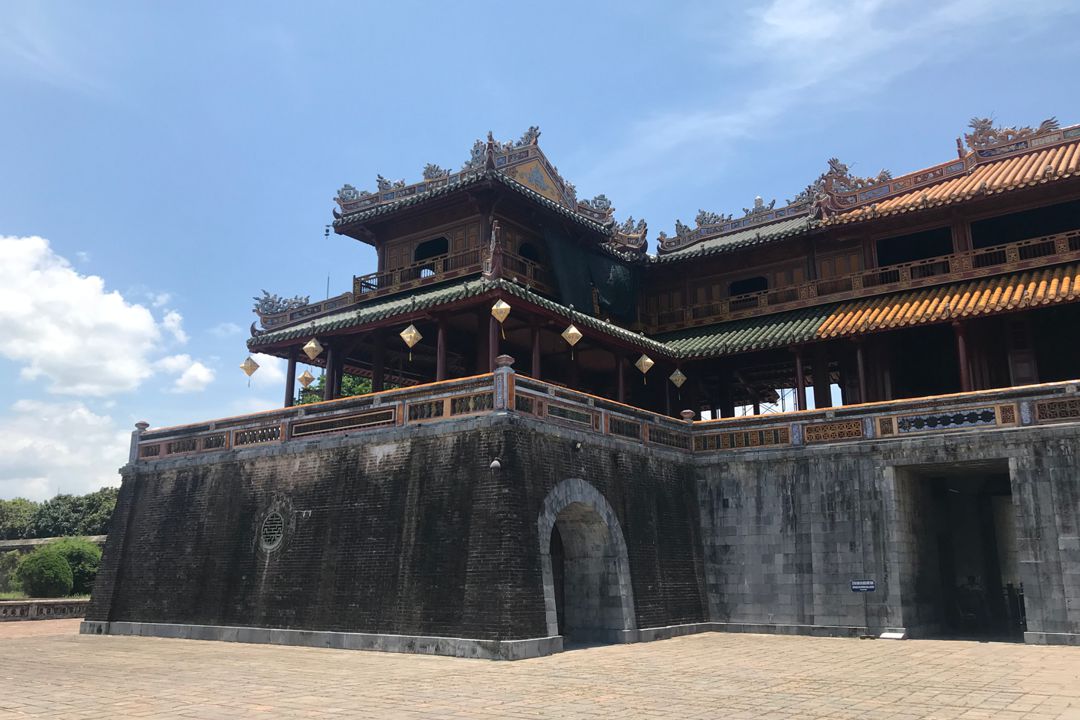
The Imperial City was where the Emperors of old would have lived and conducted all their business.
Dotted with dozens of roadside tea and coffee stalls, and little ‘know-me-not?’ towns in Lăng Cô, Phú Lộc – it offered a welcome respite from the twisty, turny roads of the mountains, and we halted for a much needed caffeine fix. Then, we arrived at the Imperial City in Hue which was once the center of the country’s political demonstrations. The expansive complex has the same symmetrical layout as Beijing’s Forbidden City, but was aligned northwest-southeast, instead of north-south. It consisted of a citadel-within-a-citadel, the emperor’s residence, temples and palaces, and the state buildings, within a 6-meter high, 2.5km-long walls. Sadly, it is a shadow of what it once was – the enclosure was severely damaged during the French and American Wars, and only 20 of its 148 buildings survived.
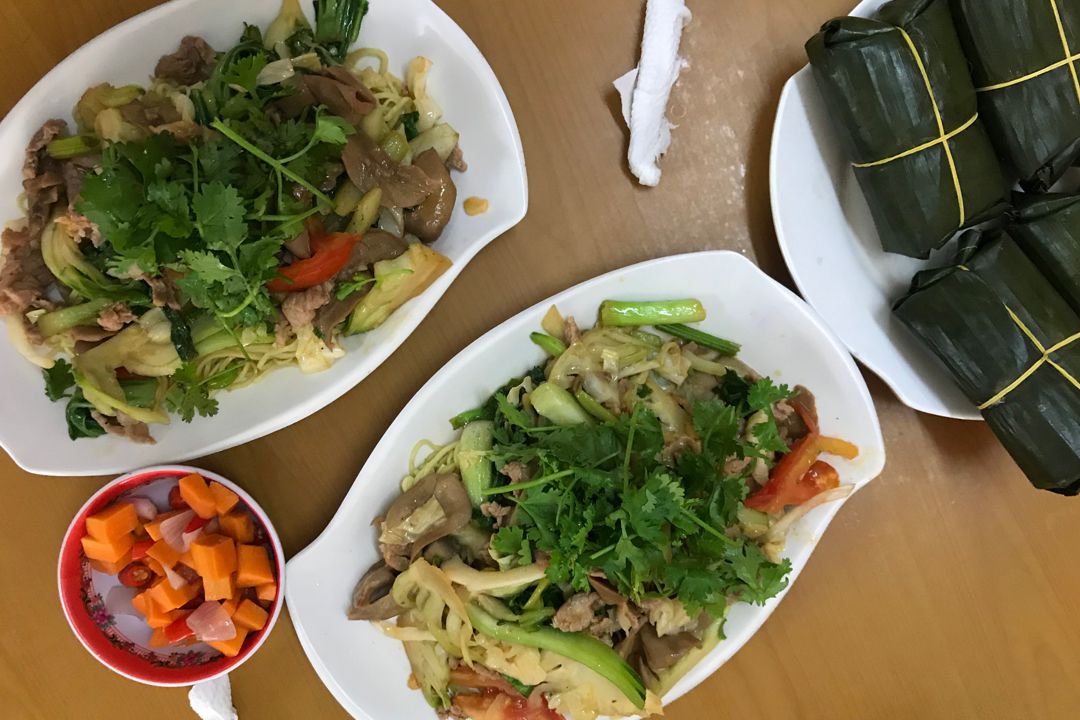
Vietnamese cuisine is diverse and seductive – from healthy herb and vegan dishes to high carb french influences.
By 1.37pm, we were compelled to make some quick decisions. I actually had Sun World Ba Na Hills in the original itinerary I made in a list of places that I wanted to visit and see. Mr.Uyen convinced me that it was more of an amusement park for kids and we were running out of time since I had a plane to catch in the evening. The location of the park been 40-kilometers from DaNang city center means we had a very small window of time to cover the long stretch, yet we will have very little time to reach the Instagram popular bridge that evokes the image of “giant hands of God”. We sat for lunch at a nearby local restaurant and I decided to skip the park and opt to spend more time exploring at the rest of three historical sites. A quick healthy lunch and we were off again.
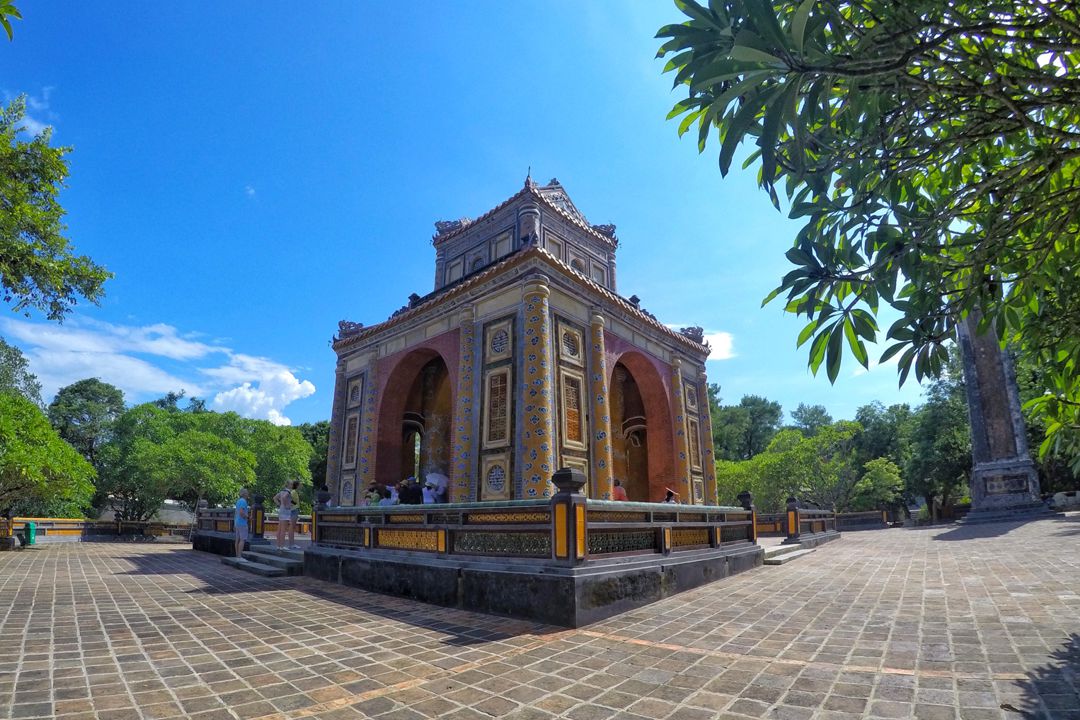
The resting place of Tu Duc, the fourth King of the Nguyen dynasty.
After a fifteen-minute ride, we reached the tomb of Tu Duc – one of the many royal tombs situated in the outskirts of the former Imperial Capital, unparalleled in its size and luxuriousness. The tomb was constructed between 1864 and 1867, as a memorial to the fourth Nguyen Emperor Tu Duc’s long and somewhat sad life. The architectural features of the tomb were inspired by some of his literature and poetry. The extensive cost of building the tomb and forced labor resulted a coup plot that was discovered and subdued.
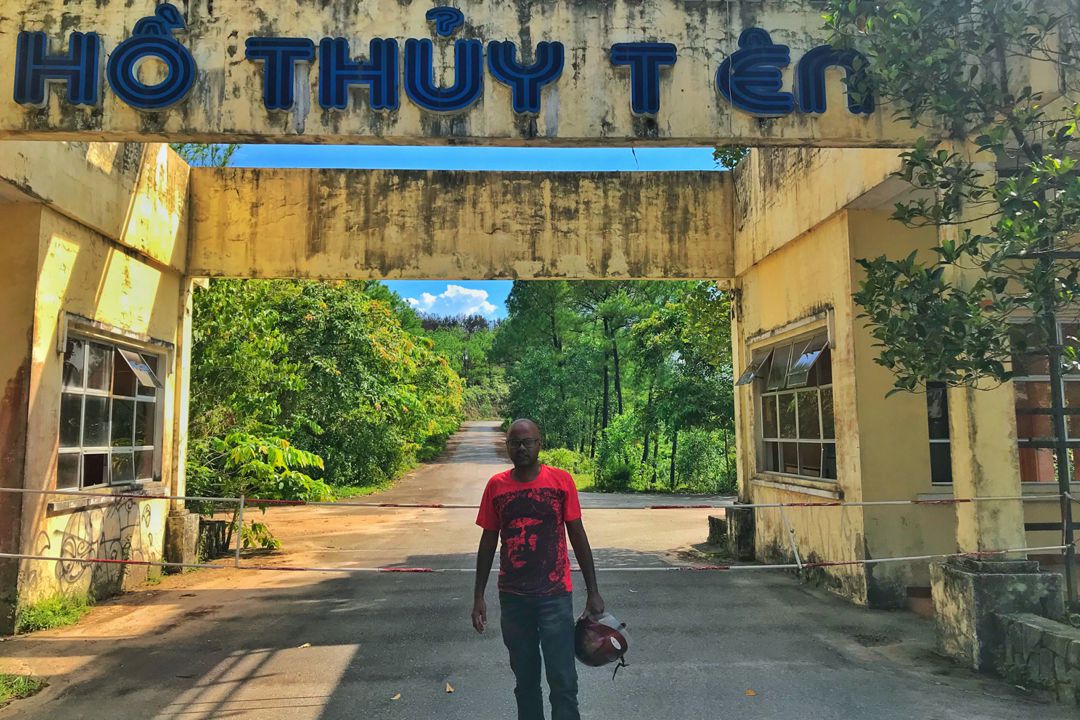
This is not a tourist attraction and you will not find it on a Vietnam travel guide.
A twenty minute ride from the tomb of Tu Duc and we arrived at the entrance of Ho Thuy Tien, an eerie abandoned water-park, but bad – we were not allowed to get in. We pleaded the security guard at the entrance to allow us a couple of minutes inside to capture some photos, but he just didn’t let us in. This is not a location for the faint of heart, and everyone that has been here, it took them some serious motorbiking skills to navigate and find it and a lot of guts to get inside and explore. Hit a search on google and you will read about the live crocodiles that has mingled among abandoned waterslides, half-full aquarium tanks and a massive dragon structure whose interior looks vaguely like the set of a horror movie. It cost almost three million dollars to construct the half-completed water-park, which ceased the construction project in 2004 due to financial instability. I have watched many videos of the abandoned water-park on Facebook and Instagram, but had no idea it was permanently off-limits for visitors until we tried in person.
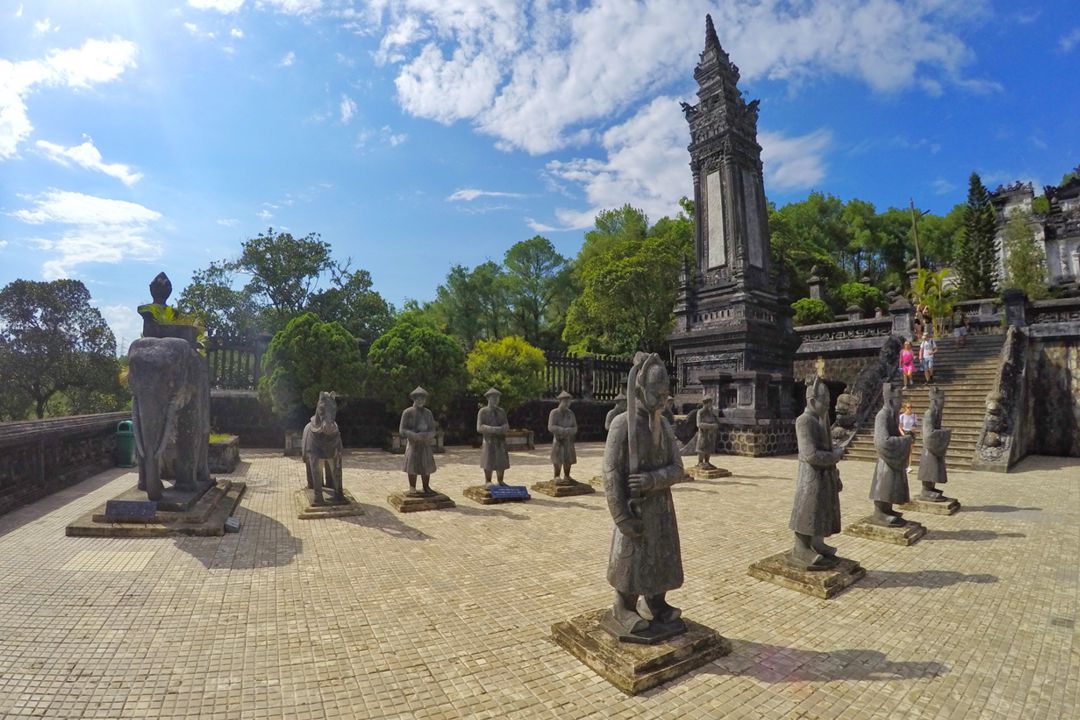
The mandarin honor guards have a mixture of Vietnamese and European features.
Our last and final attraction was the tomb of Khai Dinh, a monument located 10-kilometers from Hue in Chau Chu village by the hillside. Khai Dinh was the the 12th Emperor of the Nguyen Dynasty and was largely seen as political puppet for the French colonialist regime. The vibrant tomb boasts Vietnamese and European influences and its construction lasted 11 years. The magnificent exterior of the tomb is covered in black concrete, and the interiors appear in an explosion of flamboyant mosaic.
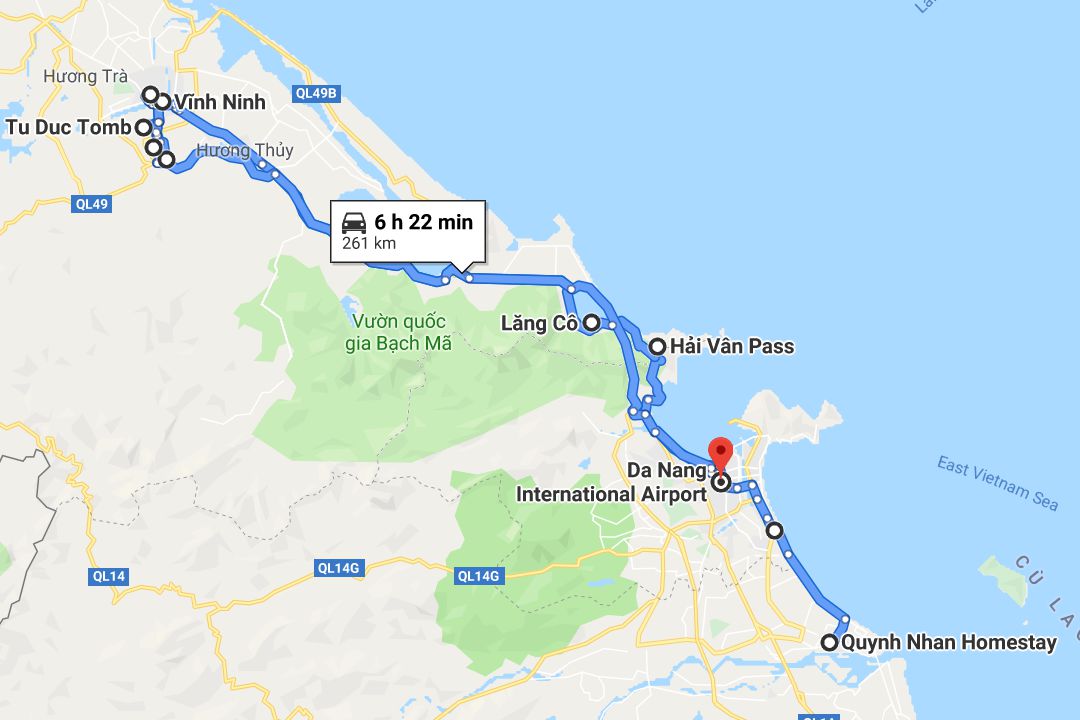
We traveled almost 260-kilometers on day 2 totaling 360-kilometers during our two days.
The two days we rode here made me feel like being on the set of a fictional, fantasy movie. Each corner and every mile filled constant reminders that this is actually real life. We rolled through one of the most magical places on the planet: The Hai Van Pass – an ever-changing landscape where the mountains meet the East Vietnam sea and wildflowers are sprinkled across the green, the wide-open spaces, and the wind-through-the-hair sense of epic feeling that creates a clash of environments that is hard to imagine unless experienced in person. A few cold beverages, and it was time to to say goodbye to Mr.Uyen and wish him well as we separated our ways. If you’re not taking hundreds of pictures in this country, you must be blind!
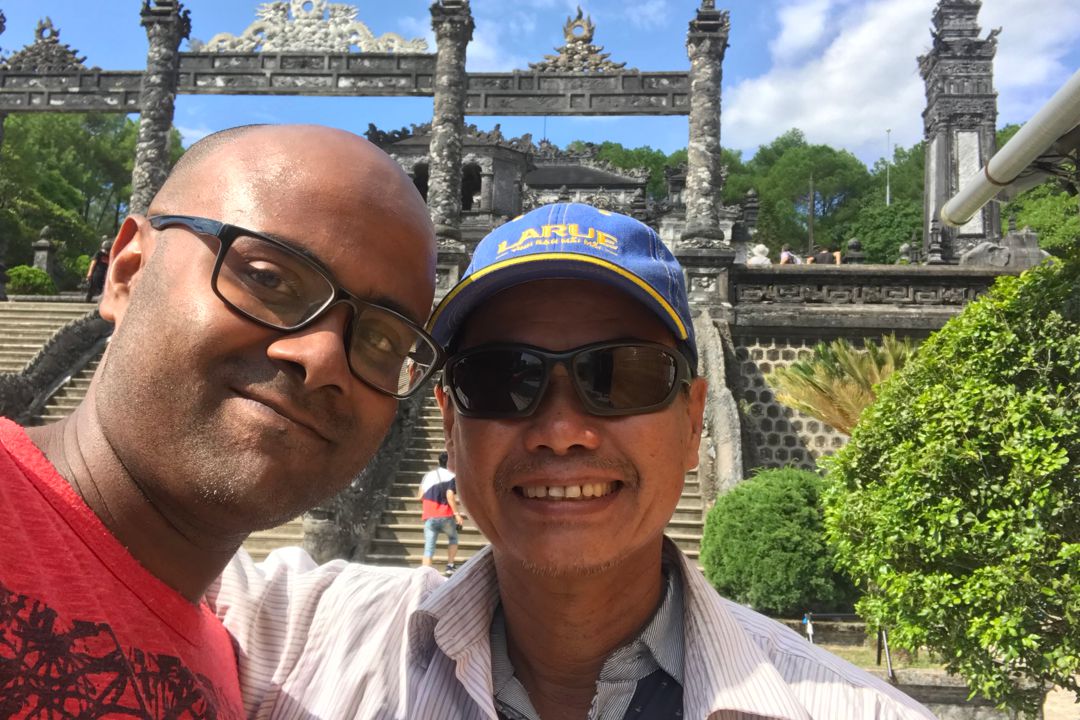
Thank you Mr.Uyen for the incredible two days. I couldn’t have visited all these places under such limited time without you.

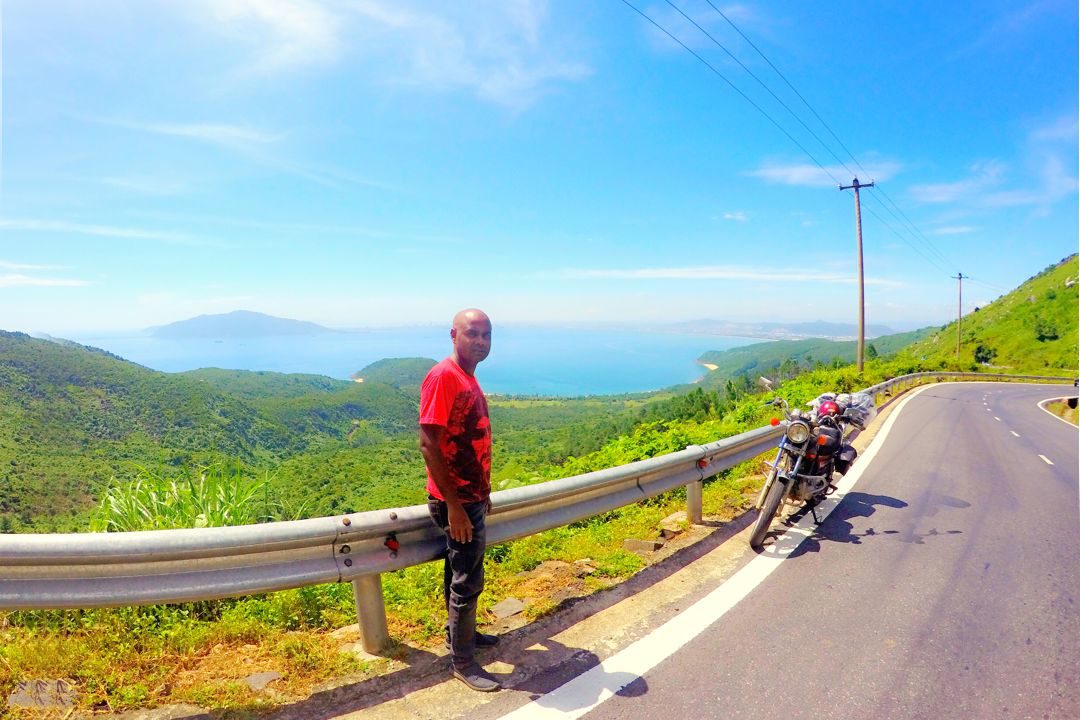
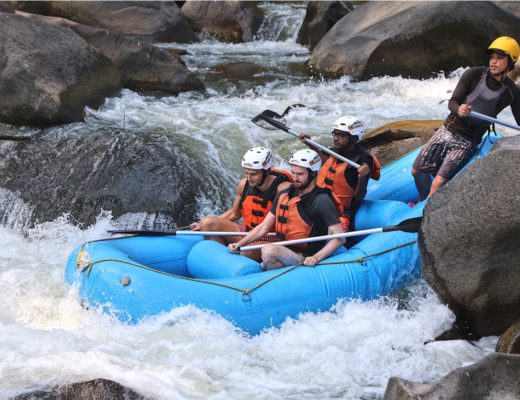
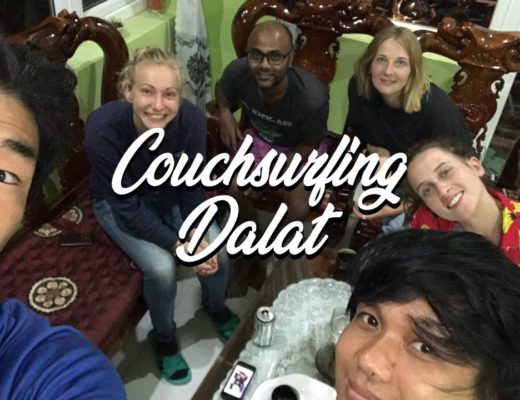
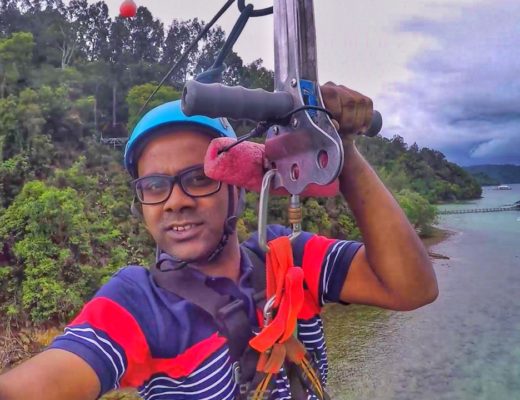
No Comments